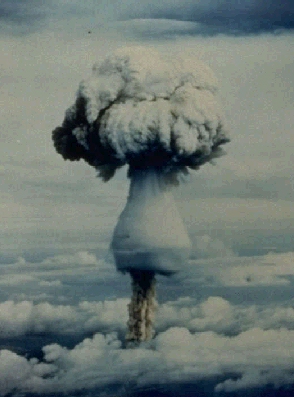For my wife's birthday, I purchased her "The Girls of Atomic City" The Untold Story of The Women Who Helped Win World War II" by Denise Kiernan. The book explores the often untold history of Women during the Second World War. Many people in seminar's across University Campuses have studied Women's contributions to the War, building bombs, aircraft, tanks, trucks and many other things that cannot be listed as it would take more than the space available on this free blog!
 |
| Available from Amazon.com |
What I was surprised to learn, was that the United States built an entirely secrete city during the war to help build the Atomic Bomb. Everyone has heard about Los Alamos labratory, and many believe the bomb was built, developed, and tested at this location. I was even under this impression. "The Girls of Atomic City" tells the story of the thousands of women, who were moved to the newly built secrete military city of Oak Ridge, Tennessee to help build the Atomic Bomb, all while they did not fully know what they were developing. Each facility was responsible for a different piece of the weapon, and no one ever saw a finished product leave the facility, so no one knew what was being built.
The city itself was established in 1942 as a production site for the Manhattan Project - conducted by the United States, United Kingdom, and Canadian governments contributions. The area was selected because its relatively low population made the acquisition of the land relatively affordable, as almost all of the local residence were forced to evacuate their homes and move elsewhere. Oak Ridge became a military town, checkpoints to enter and exit the city, surrounded by fencing. The low population also helped keep the town a secrete. The population in 1942 was a mere 3,000 - but this would boom to more than 75,000 by 1945 and the end of the War. The largest facility built in Oak Ridge, the K-25 Uranium separation facility covered more than 44 acres. For a number of years, this was the largest building in the world. Aside from K-25, S-50 and Y-12 plants were built to separate the fissile isotope uranium-235 from its natural state. The United States also built the X-10 plant which is currently the Oak Ridge National Laboratory, was originally established as a pilot project for the production of plutonium for a Graphite Reactor.
With the quick influx of people to this secrete town, prefabricated housing, apartments and dorms were established with a basic community layout, and dirt roads, as there was no time to pave the roadways, as the city was growing faster than it could accommodate.
Not only was the city a secret, what people were working on was a secret. No one working in the various plants (despite the Army and Government officials overseeing the community) knew what they were working on. People were to swear that they would not talk about what their were doing to their neighbours and colleagues living with them in Oak Ridge.
The vast majority of the population of Oak Ridge were women. They were completing much of the scientific exploration and projects that led to the development and success of the Trinity Test in 1945, and the weapons used against Japan in August of 1945.
When news of the first atomic bombing of Hiroshima Japan on August 6th 1945 made its way back to the United States, and President Harry S. Truman thanked all those who worked diligently at the Oak Ridge facility, was it revealed to the residents of Oak Ridge what they had been working on developing.
Even today Oak Ridge is still a national nuclear research and weapons facility. Here is what happened to the facilities operated at Oak Ridge:
K-25 where uranium was enriched until 1986 is in the process of being decommissioned and decontaminated.
Y-12 which was used for the separation of Uranium is sill in use for nuclear weapons processing and materials storage.
X-10 where the test Graphite Reactor is located, is now the site of Oak Ridge National Laboratory.
S-50 liquid thermal diffusion plant was demolished at the end of the war.
As of the 2010 census, the population was at 29,230.
Now we can all be aware of the contributions of Oak Ridge Tennessee for ending the Second World War, that Los Alamos was not alone in its efforts during the Manhattan Project.
Remembering History - Oak Ridge - The Secret Atomic City
